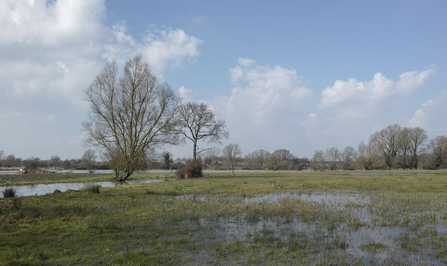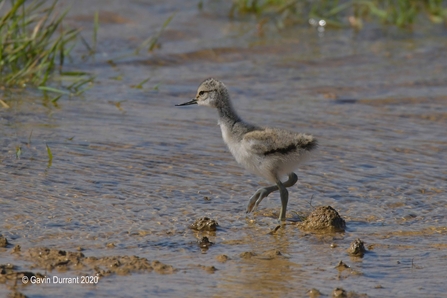Over the last few years, there has been some discernible rifts within the conservation movement in how we tackle the crisis of biodiversity decline. These differing schools of thought can be seen in the differences between Tony Juniper’s book, ‘What nature does for Britain’ and George Monbiot’s ‘Feral’. Both are excellent in their own way and provide useful narrative on how we can protect nature in the face of the myriad of challenges such as climate change, housing growth, road construction and modern farming practices. Whilst ultimately they want the same thing, there is no doubt they come from different schools of thought and perspectives. Juniper’s pragmatism, tapping into opportunities and market realities to lever due redress for wildlife, Monbiot’s passionate call for us to fully value the natural world and leave it be. Both are important pieces of work. More recently, Isabella Tree’s ‘Wildling’ and Benedict Macdonald’s ‘Rebirding’ have looked at how the hands-off approach can work in reality. Both these works are extremely persuasive, Tree’s work has been especially successful in inspiring landowners across the UK to consider a different approach to land management.
The ‘middle-way’ approach to conserving our wildlife
Black Bourn Valley by Steve Aylward

'Wilding' at Black Bourn Valley - Steve Aylward
How do these philosophies translate to a local Wildlife Trust trying to do its best to protect and enhance nature at a county level? Well, as with many things in life, a ‘middle-way’ approach, taking on board bits of both approaches on a case-by-case basis seems to us as the best approach. We don’t want to be dogmatic in our view. If we take as a starting point that our job is to get the best outcome we possibly can for wildlife with the resources we have (I think we can all agree on that!), being flexible in thought and action to any given situation seems to be the best approach.
The middle-way approach is reflected on our reserves. If we managed all of them intensively, we could, theoretically at least, increase the biodiversity per hectare by creating many ecological niches. Many rare species which often rely on more intensive management would benefit. At the other end of the spectrum, we could simply step back and allow nature to ‘do its thing’ across all our reserves. This would create swathes of wildness, help a suite of different species and would certainly be a lot cheaper and enable us to potentially buy more reserves without significantly adding to staff costs. However, both approaches have their drawbacks. The ‘intensive’ approach would simply be prohibitive due to the cost. We simply could not afford the number of staff to manage the number of reserves we look after. The ‘hands-off’ approach, whilst being more cost-effective to run, would undoubtably lead to the loss of many species, such as some wildflowers, stone curlew and avocet.

Scrape creation at Peto's Marsh, Carlton Marshes - John Lord
Through the middle way, some of our reserves are managed more intensively, where it would be difficult to replicate natural systems and processes, although in reality many of them are a combination of both approaches. For example, at our new reserve at Carlton Marshes, we use rare breed cattle to extensively graze, trying to create natural structure in the vegetation sward. This low intervention approach, very much advocated by Monbiot, Tree and Macdonald, when applied correctly, is extremely successful in maintaining biodiversity. However, Carlton Marshes, like all of Suffolk, is constrained, sitting within a managed landscape. The floodplain no longer functions naturally, we don’t have catastrophic floods and meandering rivers, creating and forming naturally occurring open areas and features such as shingle banks and cliffs. We no longer have the range of grazing animals that would been in Britain in prehistory, to which our wildlife evolved alongside. These mega-herbivores would have created open spaces, like elephant on the Serengeti, in a way our grazing cattle can never do. It was these species and natural events that created the landscape diversity that in turn drives biodiversity. We no longer have these and as a result, periodically, we have to replicate these long lost natural processes. At Carlton Marshes, that means keeping the new wader scrapes open. Cattle on their own won’t do this effectively and if we don’t do this, breeding avocet, for example, would decline.

Avocet chick at Carlton Marshes - Gavin Durrant
At other reserves, we have been as hands off as we can, whilst still recognising that we don’t work within a naturally functioning landscape. At Black Bourn Valley, on former arable land, we are letting the former fields ‘re-wild’, whist grazing will help with complexity of the vegetation structure, increasing the number of species present. Turtle dove for example, declining rapidly in the UK, have really benefitted from the developing scrubby areas. Even here though, without some invention, some of the features would be lost over time. Black Bourn Valley is very important for its ponds, rich in dragonflies and amphibians. From time to time, we’ll need to go in and open up a few of the ponds, to maintain the diversity of pond types, from sunny and open, to closed and shaded. It is these differences that provide homes for many different species.
Turtle dove at Black Bourn Valley (https://youtu.be/7sfLK_wxbO8)
Turtle dove at Black Bourn Valley
Successful wildlife management needs careful thought and consideration. It needs us to be open-minded in our approach in any given situation but of course, without the support of our members, we could never hope to maintain this flexible approach. By keeping to the ‘middle-way’, we are confident our reserves will always be the best they can be for our wildlife.
